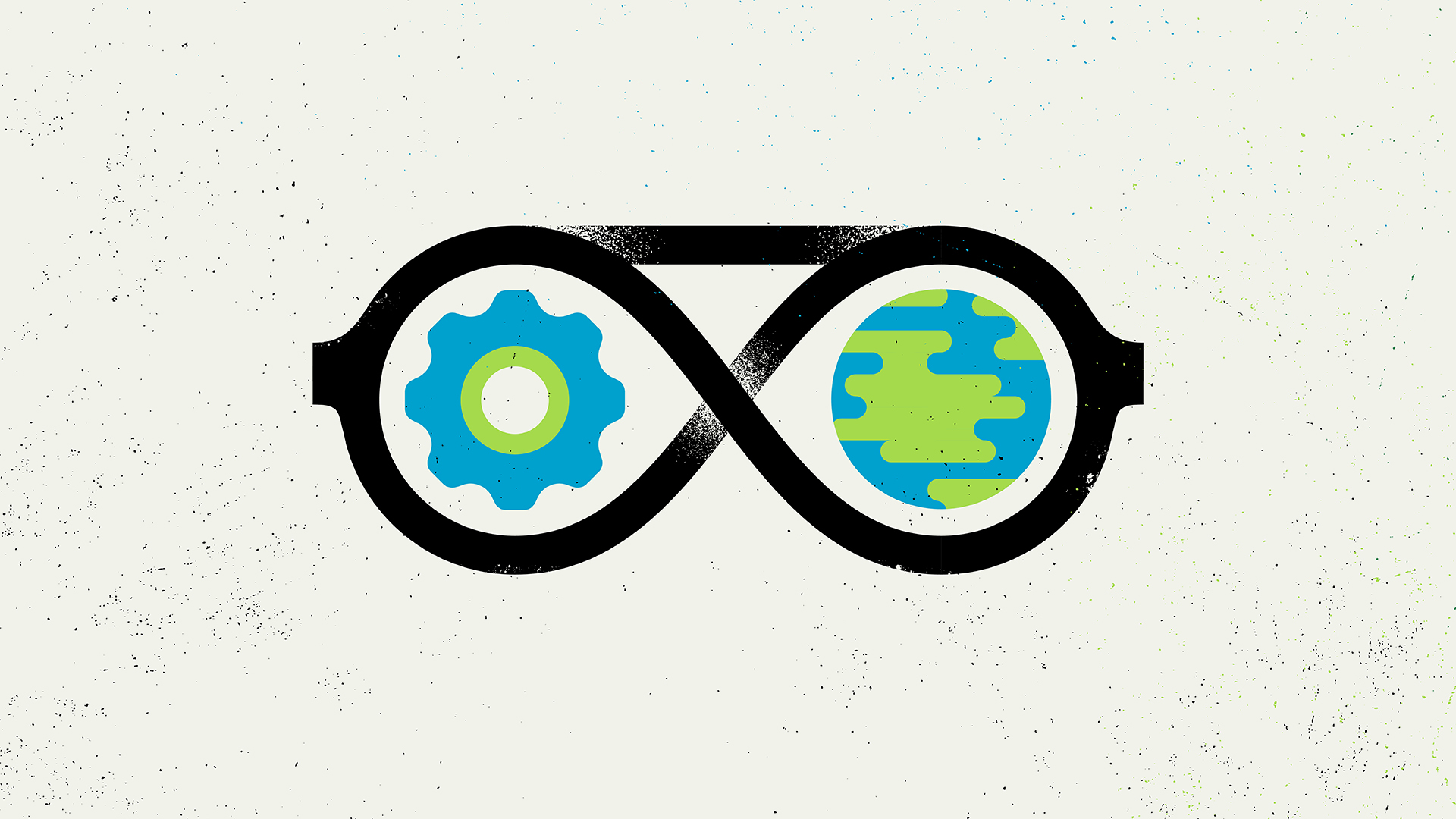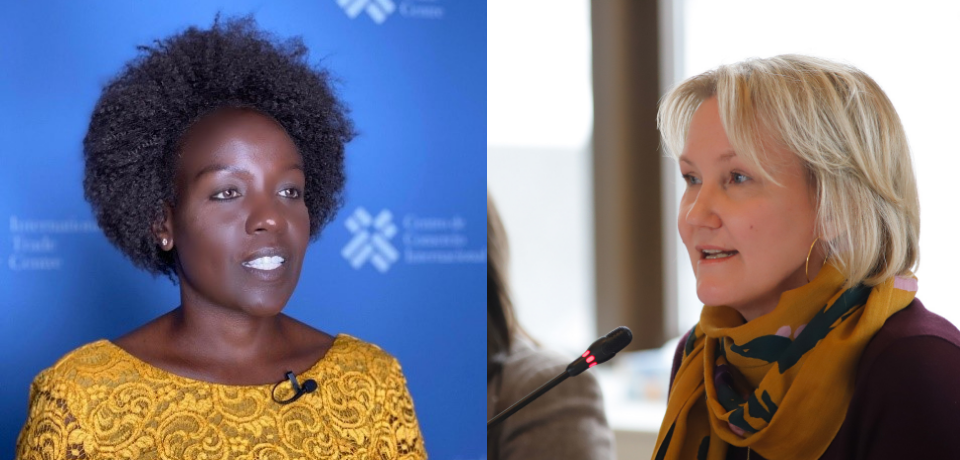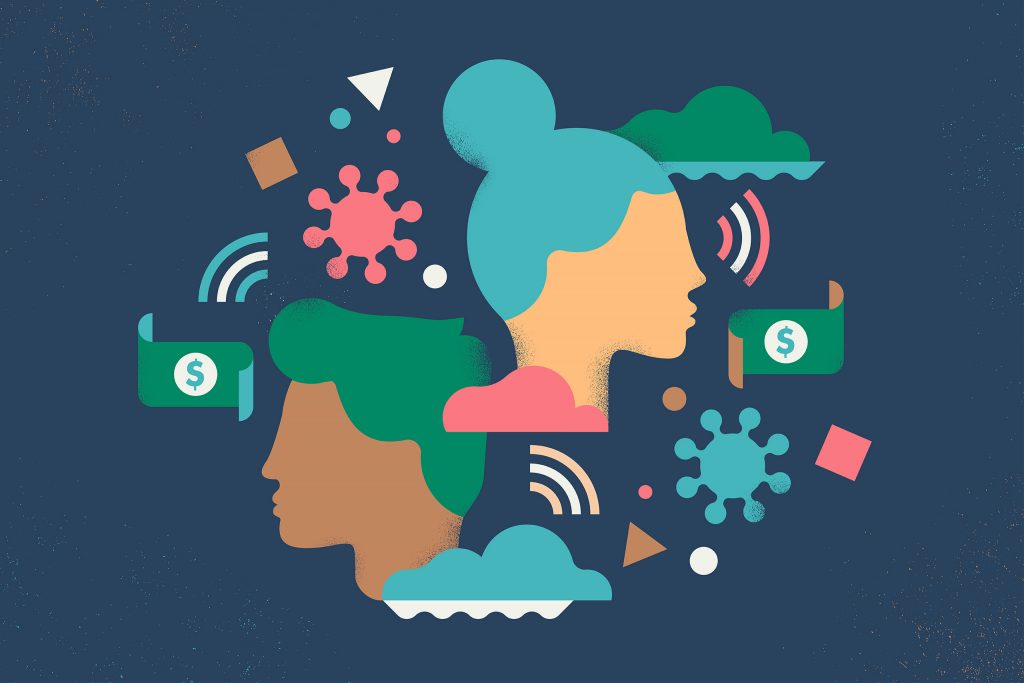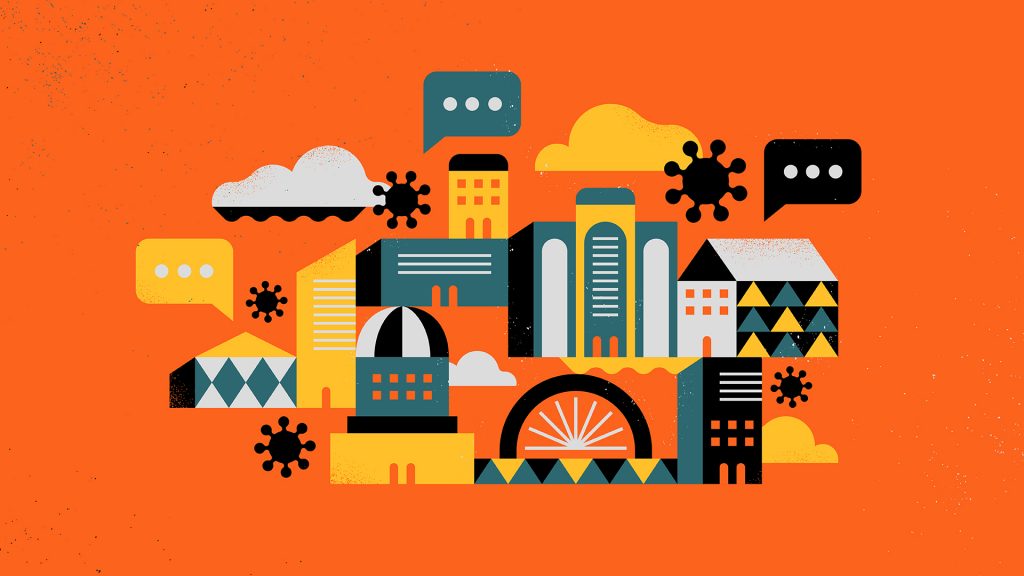Author: Alice Irene Whittaker
BiographyAlice Irene Whittaker
Alice Irene Whittaker is an environmental writer. She is also the Director of Communications at the Smart Prosperity Institute, and at the Circular Economy Leadership Coalition. Her writing has been published in national publications, and she is currently working on a non-fiction book called Circular Living: Nature’s Lessons for a Resilient and Regenerative World.

Illustration by Brandon Serbec
Alice Irene Whittaker discusses how the pandemic has revealed the fault lines in our economic model and is pushing us to adopt a new, more resilient and inclusive one.
Alice was interviewed by Calina Ellwand, Manager of Communications and Public Affairs at the Global Centre for Pluralism on July 23, 2020.
The following is a transcript of the interview, which has been edited for brevity and clarity.
Calina: What has the pandemic taught us about our economic model and how it needs to change?
Alice Irene: Our economic model has been problematic for a lot of people for a long time, and the pandemic has exacerbated those problems. Certainly people are experiencing those issues more acutely, but I believe that the pandemic is also just revealing fault lines that were already there.
We currently have a linear economic model that is often described as “take, make, waste”. We take resources from the earth, make something we use, and then we waste it. Our waste piles up with no plan for what happens at the end. By its very nature, this economic model has been relying on exploitation of people and resources, and on constant extraction from the earth. That’s what we need to redesign. We need to go from taking to caretaking, from extraction to regeneration.
In contrast to our current model, a circular economy operates in a continuous cycle. It’s a closed loop with no waste. What we currently see as waste would actually be a resource for the next cycle of, let’s say, manufacturing a good. In a circular economy, we reduce how much we’re buying and using. When we do buy something, we buy high-quality items that were designed for longevity and eventual disassembly and reuse. A circular economy would need to be powered by renewable energy so that it truly is zero emission, zero waste, and can continually operate.
A circular economy is also characterized by strong workers’ rights and a social safety net. This is resonating with people right now because we’ve seen how vulnerable we are and how we might not have the security we thought we did. The pandemic has given people an opportunity to speak out more about the problems with the way we have been doing business and living our lives.
Calina: What does a circular economy look like in the developing world? Is it feasible in parts of the world where poverty is a huge issue and the state does not have the resources to offer things like universal basic income or universal childcare?
Alice Irene: Transitioning to a circular economy for all countries is not about whether it’s feasible; it’s something we have to do. It’s a matter of finding out how we’re going to do it. Kate Raworth, who developed Doughnut Economics, says that we’re all developing countries right now. There is not a single country that is currently providing a high quality of life for its citizens and not overshooting the boundaries of the planet.
A circular economy would be for all countries. They would all, for example, be powered by renewable energy. They would all be focused on zero waste. However, while including these universal principles, the model would be tailored to fit different regional contexts. We need to create an economy that connects to the ecosystems of a particular place.
Calina: Are there specific examples that have arisen during the pandemic that are giving you hope for this economic approach?
Alice Irene: I have seen so many hopeful, heartening examples in the past few months. One is the way in which people have forged closer bonds with their neighbours. People who hadn’t met in decades of living next to each other are now helping each other. For example, all five members of my family had presumptive COVID-19, and it was our neighbours who offered to bring us food. I think this kind of community support will only strengthen in the years ahead when things get challenging with climate-related disasters. Stronger communities make us all more resilient.
The other heartening thing I’ve seen is that so many people are embracing growing their own food or supporting local farmers. The insecurity of the pandemic has made people want to be more self-sufficient. They want to feel a sense of food security with their own hands. People have been planting victory gardens, which I’ve heard called resilience gardens, and I find this very hopeful. People have also been supporting local farmers, who are able to feed their communities while regenerating the soil and strengthening the local economy. This solving of many problems at once is a characteristic of a circular economy. You’re solving food security and soil health and nutrition and local economy all by the way you farm.
The third thing I find hopeful is how there is more space for dialogue. There has definitely been a crescendo in how people are expressing a desire for reshaping the economy, and it has become so much more vocal and widespread in the past few months. I hope this pandemic has created the space and political will to do it. It is only through that collective will, through all of us demanding that we redesign the economy, that we will create change.
On the Circular Economy
We currently have a linear economic model that is often described as 'take, make, waste'. We take resources from the earth, make something we use, and then we waste it. Our waste piles up with no plan for what happens at the end. By its very nature, this economic model has been relying on exploitation of people and resources, and on constant extraction from the earth. That’s what we need to redesign. We need to go from taking to caretaking, from extraction to regeneration.
Alice Irene Whittaker, Environmental Writer
Calina: What needs to happen at the structural level, within our governing or educational institutions, for example, to promote this kind of economic model?
Alice Irene: I believe that moving to a more inclusive circular economy will happen at three levels. On the personal level, it will mean revaluating the stories that we tell and how we understand ourselves as part of nature. We must deconstruct these age-old, deeply engrained stories that there’s a hierarchy on our planet and, since we are at the top of it, it is our right to dominate it and extract from it.
The second level where I see change happening is through citizen action. This could mean repairing, mending, swapping, changing how we buy things, planting our own food, raising our children differently, using zero-waste cleaning supplies—changing our day-to-day behaviours.
Thirdly, at the systemic level, change might look like investing in renewable energy, in the caretaking professions, or in new innovations that bring smaller circular business models to scale. We need strong policies around how much recycled material is in what we are manufacturing. There should also be considerations for the end of life for goods, so that someone is responsible for repurposing them and making sure that everything we make either goes back into the cycle of manufacturing or can biodegrade safely.
The agriculture sector as a whole should become regenerative, either by using regenerative agriculture practices or permaculture where you’re working with nature cycles and putting nutrition back into the soil, rather than constantly depleting it.
Every single sector should be incentivized or regulated so that it becomes circular. In fashion, for example, instead of this fast-fashion model that is harmful for workers and for the planet, you would be making everything out of biodegradable and/or recycled materials. There would be buyback programs, subscription programs, clothing rental, so that everything is operating in this closed loop. This closed loop should happen in every sector.
Calina: How does a circular economy help support the most marginalized groups and bring about a more equitable world?
Alice Irene: Instead of splitting our problems up into different societal challenges, a circular economy needs to see the connections between them, which makes us better at solving multiple problems at once. For example, for a long time, the environmental movement has seen itself as distinct from social justice. Now, there’s a whole movement around climate justice where those linkages are recognized and rectified. Instead of seeing distinct problems, we need to see that they all stem from the same root. We need to see that justice is justice and we need to address all the issues together. This means listening to marginalized voices and making sure that they’re centred in the environmental movement. It means making sure that marginalized and vulnerable communities are not facing the worst of the effects of climate change.
For a long time, certain countries have been causing the bulk of environmental damage and climate change while other countries are more vulnerable to the effects of this. That’s something that we should reconcile. Certain countries should not be able to benefit from wreaking this damage at the expense of other countries. We need to find a more equitable way.
The circular economy will only be as hopeful as I think it will be if it considers planetary wellbeing and social wellbeing together. Instead of exploiting people and resources in the name of the economy, we must see the economy as being in the service of all people (not just certain groups of people) and the planet.




